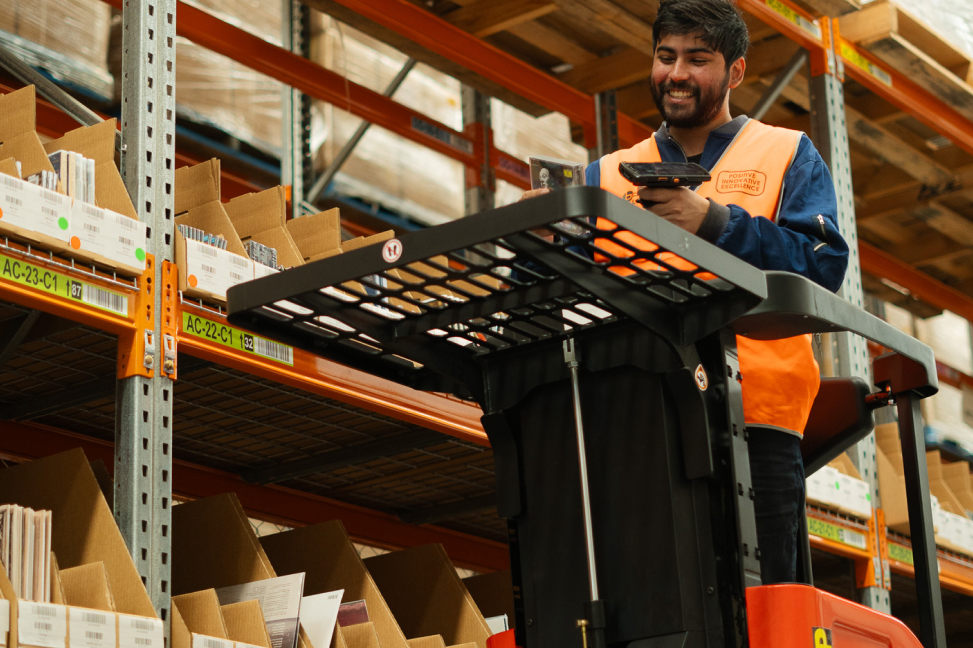
Introduction
Effective inventory replenishment forms the backbone of successful business operations in today’s competitive marketplace. At its core, inventory replenishment refers to the strategic process of restocking products to maintain optimal inventory levels, ensuring businesses can meet customer demand without tying up excessive capital in surplus stock. Without a well-structured inventory replenishment process, companies frequently encounter costly challenges such as stockouts that frustrate customers and excess inventory that drains financial resources. For businesses seeking growth and operational efficiency, understanding and implementing effective stock replenishment strategies has become increasingly essential, particularly when supported by the right technological solutions and logistics partners. At B dynamic Logistics, we’ve observed that businesses with optimised inventory replenishment processes consistently and create customer satisfaction and profitability.
What is Inventory Replenishment
Inventory replenishment encompasses the systematic approach to ensuring you have the right stock, in the right place, at the right time—a fundamental concept that extends beyond basic inventory management. While inventory management covers the broader oversight of stock throughout its lifecycle, the specific meaning of inventory replenishment focuses on the critical process of restocking products before they reach dangerously low levels. The primary objective is to replenish stock levels efficiently, preventing both excess inventory costs and revenue-damaging stockouts. This delicate balance directly impacts customer satisfaction, as modern consumers expect immediate product availability, and businesses that consistently replenish their stock appropriately can maintain the competitive edge necessary for sustainable growth. For Australian businesses dealing with unique geographical challenges, understanding how to effectively replenish your stock becomes particularly crucial for maintaining smooth operations across vast distances.
Key Factors Driving Effective Replenishment
Several critical factors determine the success of any inventory replenishment strategy, with demand forecasting standing as perhaps the most fundamental. Accurate demand forecasting enables businesses to anticipate future sales patterns based on historical data, seasonal variations, and market trends—preventing both overstocking and understocking scenarios. Equally important is understanding lead time—the interval between ordering and receiving stock—which varies dramatically across suppliers and must be factored into every replenishment decision. The reorder point (ROP) represents the precise inventory level that should trigger new orders, calculated by considering both lead time and anticipated demand. Additionally, maintaining appropriate safety stock protects operations against unexpected demand spikes or supply chain disruptions, acting as an insurance policy against stockouts. B dynamic Logistics specialises in helping businesses optimise these factors, particularly for companies managing complex supply chains or handling big and bulky items that require specialised equipment and warehousing solutions.
Common Inventory Replenishment Methods
Businesses employ various strategies to maintain optimal stock levels, with each method offering distinct advantages depending on operational requirements. The reorder point method, perhaps the most straightforward approach, triggers replenishment when inventory reaches a predetermined threshold, making it particularly suitable for stable-demand products. Alternatively, the min-max replenishment method establishes both minimum and maximum inventory levels, replenishing stock to the maximum whenever it falls below the minimum threshold—offering greater flexibility for seasonal items. For businesses with limited warehouse capacity or highly predictable demand patterns, the periodic replenishment system reviews inventory at fixed intervals rather than continuously monitoring levels. More sophisticated approaches like kanban inventory replenishment, which uses visual signals to trigger restocking, or demand-driven replenishment planning, which emphasises real-time data, have gained popularity as businesses seek greater efficiency. B dynamic Logistics supports these various replenishment methodologies through their comprehensive warehousing and inventory management solutions tailored to both B2B and B2C operations throughout Australia. They offer solutions tailored to the customer’s needs. Customers may have pre-existing technologies to base on feasibility, and B dynamic team will provide seamless integration.”
How Technology Streamlines Replenishment
Advanced technology has revolutionised inventory replenishment, transforming previously manual processes into streamlined, data-driven operations. Modern inventory management software and Warehouse Management Systems (WMS) provide real-time visibility into stock levels, automatically calculating critical metrics like reorder points and safety stock requirements with precision that far exceeds manual methods. These automatic inventory replenishment systems dramatically reduce human error while accelerating decision-making through automated alerts and recommended actions. Sophisticated warehouse replenishment technology enables businesses to implement automated stock replenishment processes that trigger purchase orders based on predefined rules without requiring constant oversight. At B dynamic Logistics, our integrated technology platform connects directly with clients’ sales channels to enable automatic inventory replenishment, streamlining warehouse receiving operations and providing comprehensive supply chain visibility that helps businesses adapt quickly to changing market conditions.

Optimising Your Inventory Flow
A well-designed inventory replenishment process flow delivers multiple competitive advantages, including reduced carrying costs, minimised stockouts, enhanced cash flow, and improved customer satisfaction through consistent product availability. Many growing businesses find that partnering with specialised fulfilment services providers like B dynamic Logistics, who offer expertise in inventory planning and replenishment, can transform their supply chain performance while reducing operational complexity. Such partnerships provide access to advanced warehousing best practices, sophisticated technology systems, and extensive logistics networks without requiring significant capital investment. By leveraging B dynamic Logistics’ expertise in replenishment supply chain management, businesses can focus on core growth activities while ensuring their products reach customers efficiently. Regular review and optimisation of your replenishment planning in supply chain management remains essential, as market conditions, consumer preferences, and business objectives continuously evolve.
Key Takeaways
Effective inventory replenishment stands as a critical business function that directly impacts profitability, customer satisfaction, and operational efficiency. By understanding the fundamental principles of inventory replenishment, identifying the most appropriate methods for your specific business needs, and leveraging modern technology solutions, organisations can significantly enhance their competitive position. As consumer expectations for rapid delivery and product availability continue to rise, partnering with experienced 3PL service providers like B dynamic Logistics—specialists in Australia-wide solutions for both B2B and B2C operations—provides businesses with the expertise, infrastructure, and technology needed to excel in today’s demanding marketplace.
Frequently Asked Questions
What is the difference between inventory management and inventory replenishment?
Inventory management encompasses the entire process of overseeing stock from procurement through sales, including categorisation, valuation, and reporting. Inventory replenishment specifically focuses on the process of restocking products to maintain optimal inventory levels, representing one crucial component of the broader inventory management function.
How do you calculate a simple reorder point?
A basic reorder point can be calculated by multiplying your average daily sales by the lead time (in days) and adding your safety stock quantity. For example, if you sell 10 units daily with a 14-day lead time and maintain a safety stock of 30 units, your reorder point would be (10 × 14) + 30 = 170 units.
What are the main benefits of automating inventory replenishment?
Automating inventory replenishment delivers numerous advantages, including reduced manual errors, lower labour costs, improved inventory accuracy, decreased stockouts, minimised excess inventory, enhanced cash flow, better supplier relationships, and ultimately, improved customer satisfaction through consistent product availability.
Can technology help predict when I need to replenish stock?
Yes, modern inventory management systems use historical sales data, seasonal patterns, promotional information, and machine learning algorithms to forecast demand with increasing accuracy. These technologies can automatically calculate optimal reorder points, predict potential stockouts, and even generate purchase orders at the ideal time.
How does lead time affect my replenishment strategy?
Lead time significantly impacts replenishment planning, as longer lead times require earlier ordering and typically necessitate higher safety stock levels to protect against demand variability during the waiting period. Businesses with longer lead times often benefit from more sophisticated forecasting methods and may need to negotiate improved delivery terms with suppliers.
Back to Blog